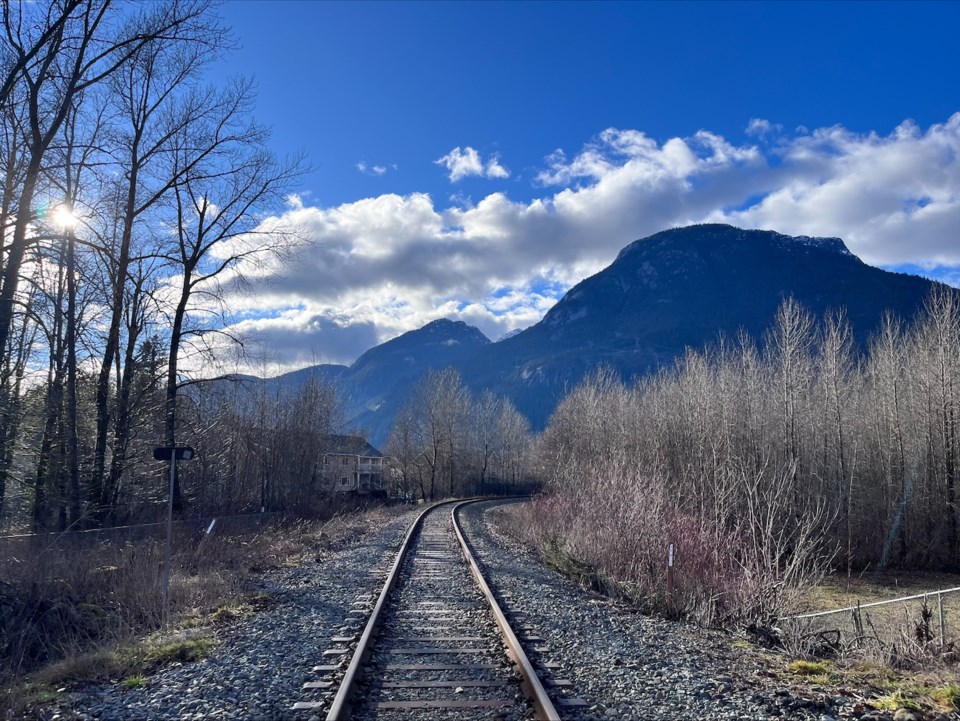The Squamish-Lillooet Regional District board of directors received a brief update from the CN Rail team last month, ahead of its along the North Vancouver to Williams Lake rail corridor through the Sea to Sky.
Speaking at the July 24 board meeting, CN Rail’s Tyler Banick reported the company would be conducting vegetation management along the right-of-way from Oct. 16 to 23 between North Vancouver and Lillooet, and from Oct. 29 to Nov. 14 for the portion between Lillooet and Williams Lake.
The way vegetation management is carried out was brought up by directors as a potential issue, with Area C director, Russell Mack, saying that spraying vegetation to kill it increased the fire risk.
“I understand you have to do that, but by spraying it, that kills all the vegetation and to me that just makes that very fire-prone,” he said.
“I know we don’t have a lot of trains travelling through the corridor now other than Rocky Mountaineer, but it only takes one, and there seems to be a better way of managing that,” he added, before suggesting mowing would be preferable to ensure greenery was still on the ground.
In response, CN’s Laura Hammer, who is responsible for CN’s herbicide activities across Canada, said they only used herbicide to prevent any grass from growing between the ballast, which is the large gravel that the rails and rail ties sit on.
Hammer explained they couldn’t have any vegetation on the 24-foot wide section that ballast went down on, but for the rest of the right-of-way, grass was good.
“Grass in the rest of the right-of-way is encouraged," she said. "We’re not spraying from fence line to fence line because grass actually holds the ballast in place. We want to keep grass in the rest of the right-of-way, it's just right on the ballast that we don’t want any vegetation.”
The remainder of the right-of-way is kept clear through regular brush clearing, with track supervisor for the line section, Tyler Ward, explaining later in response to another question on outreach and public notice that clearing is quite the job, given the fast growth rate of plants in the area.
“It seems like as we cut down on the east side of the rail, by the time we get to the west side of the rail the stump's already regrown on the east side, so trying to stay on top of it is very tough,” he said, explaining best efforts were going towards alerting municipalities and the Ministry of Transportation and Infrastructure.
Director Vivian Birch-Jones of Area B took the opportunity to bring up passenger rail following the presentation, saying communities in the area “essentially lost public transit out of the community” when they lost passenger rail.
Banick for his part didn’t push back on the idea, saying that CN Rail was “totally in favour of passenger service,” but CN Rail’s position is they believe it needs its own dedicated line.
“Our main line is where we like to see [passenger rail] have its own dedicated line just to allow that freight movement and supply chain a seamless move,” he said, acknowledging that the North Vancouver to Williams Lake section was unique for not having much in the way of rail traffic anyway.
“[There are] lots of discussions being had between different organizations and our passenger service team as we speak on that. It’s a good topic to raise right across the province and federally to help connect communities and move people.”
The SLRD has previously supported efforts by municipalities within the Sea to Sky corridor to advocate for passenger rail.
The CN Rail presentation to the SLRD board can be watched .




